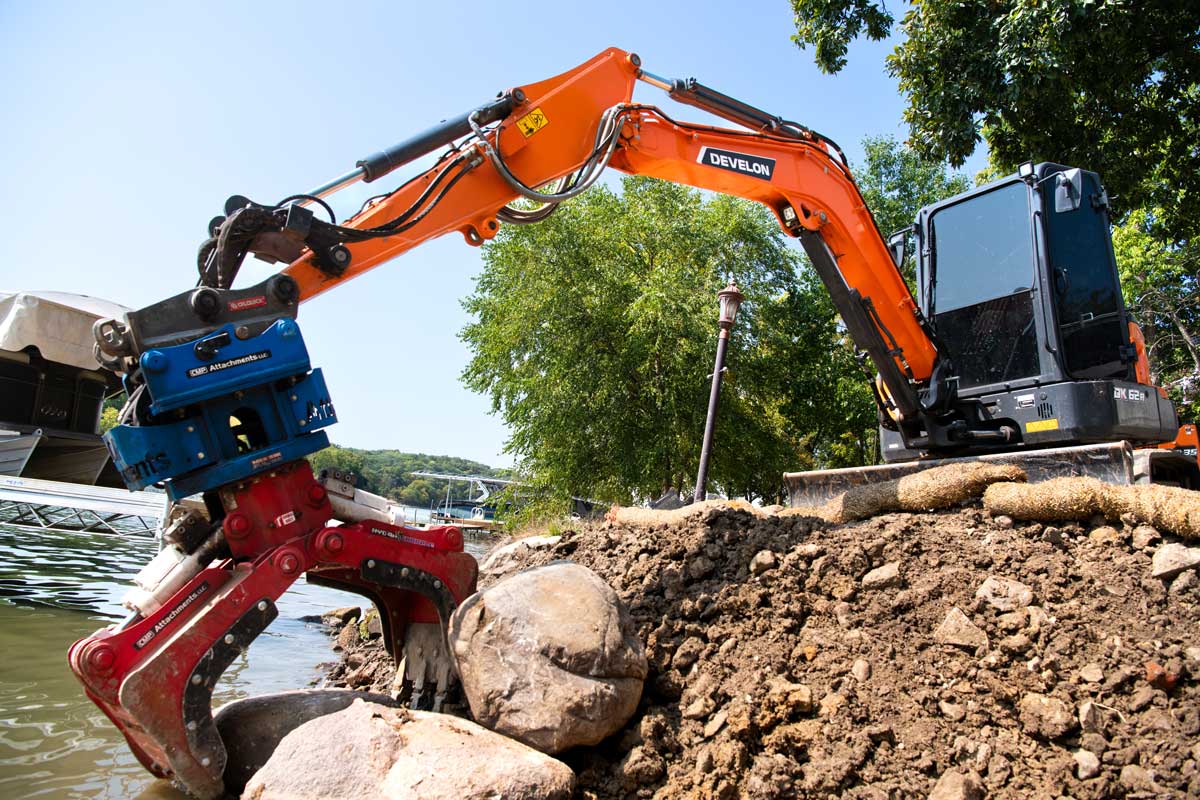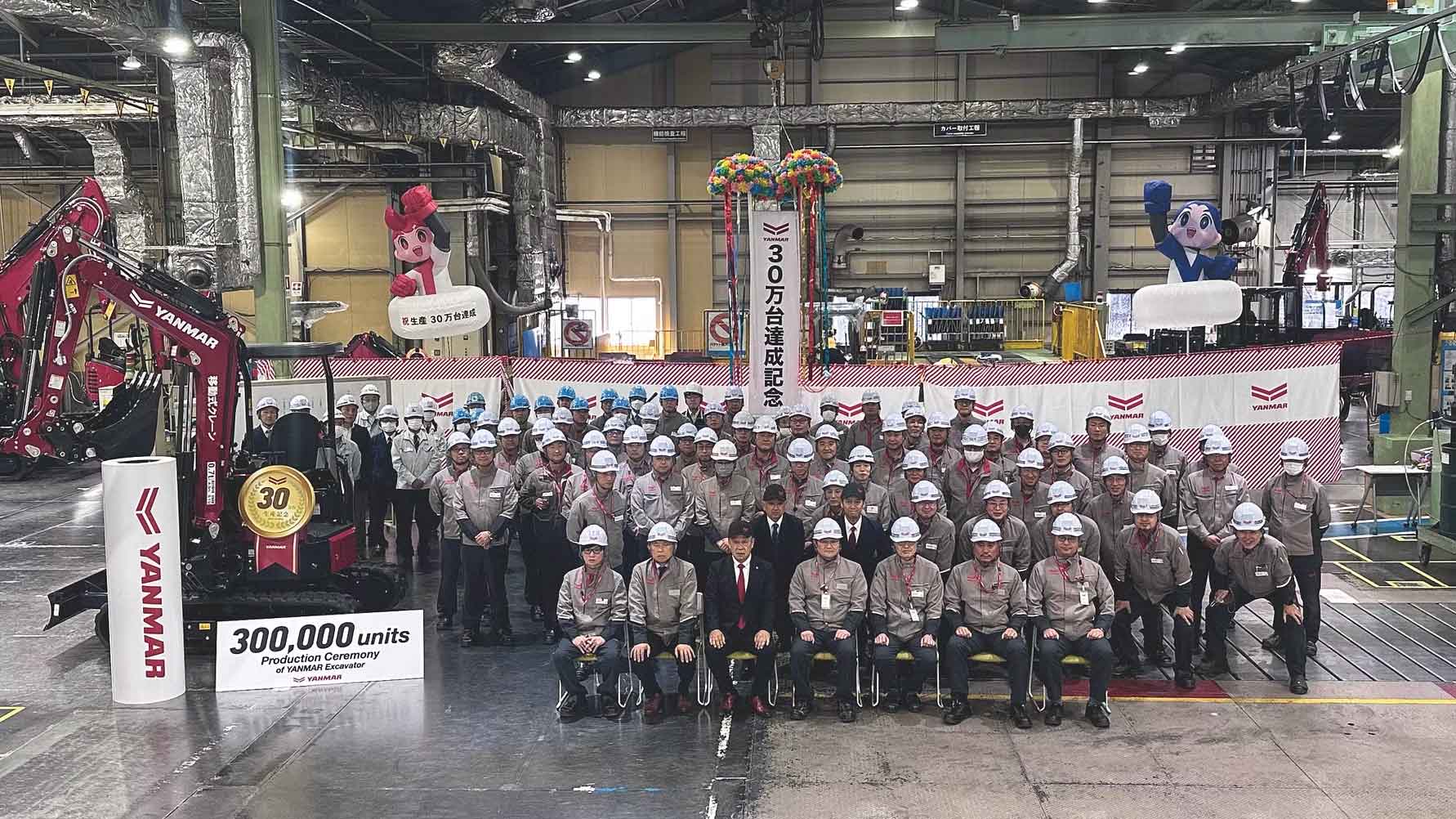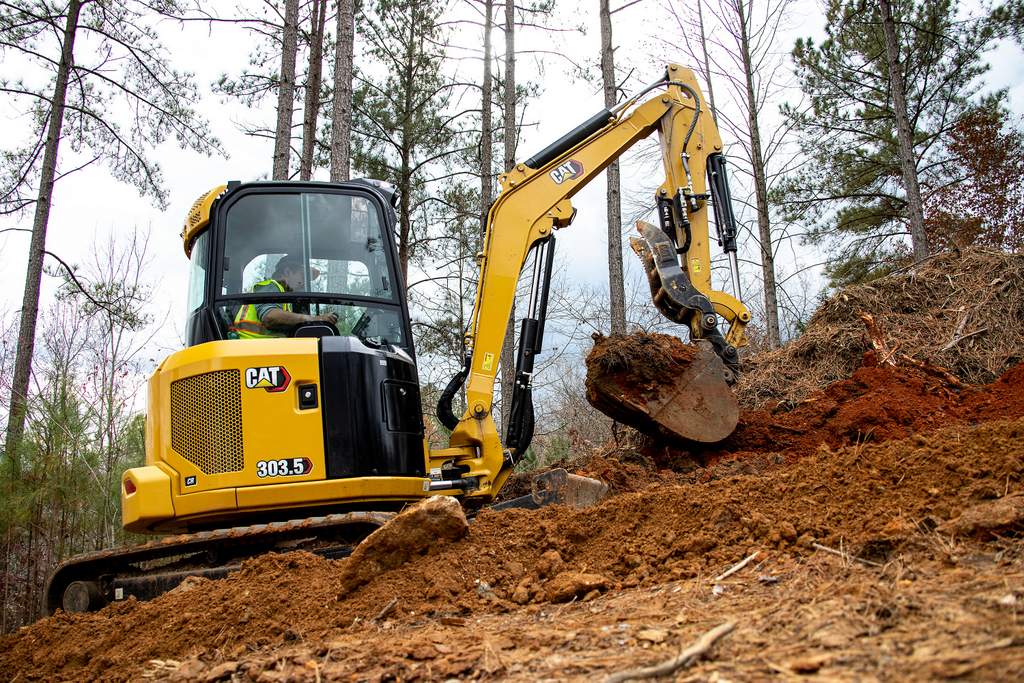Compare Every Compact Excavator Model and Brand in Our 2017 Spec Guide

Over the past two decades, the small, tool-carrier excavator has found its home in the American construction equipment fleet. It’s a machine that migrated from Asia and Europe, where construction equipment has shrunk as an answer to continual metropolitan sprawl. U.S. contractors and jobsites have been trending in the same direction, spurred by smaller space constraints, an enormous rental market (which favors small equipment) and the need for both portability and versatility in machinery.
The result is that mini excavators (also called compact excavators) have become some of the world’s most nimble and versatile diggers and attachment-takers. Defined as excavators under 6 metric tons (although we cover a few bigger ones in this magazine as well), these are small excavation machines engineered with an undercarriage and tracks, a long digging arm and a cab or ROPS enclosure. Typically with a dig depth between 5 and 20 ft and an operating weight between 2,000 and 20,000 lbs, compact excavators can fit into cramped worksites and still give big dig power. These units have grown so popular that the number of manufacturers offering models is overwhelming — Bobcat, Caterpillar, Yanmar, Volvo, John Deere, Komatsu, Kubota, Kobelco, Takeuchi, Case, New Holland, Hitachi and beyond.
Mini excavators can dig basements, bury downspout lines, install electrical services, trench service lines, auger holes for trees or grapple obscenely big, decorative rocks. Most applications for compact excavators are project-based, so what will the dig depth of your job be, and what are the installation specs of the product (drainage pipe, fiber optics, tree transplants or caskets)? Weigh those project details with the particular specifications of the compact excavator you’re eyeing. Popular mini ex specs include: operating weight, digging depth, bucket breakout force and maximum reach.
The 3.5- to 4-ton class will continue to drive the compact hydraulic excavator market. Also, conventional-style compact excavators continue to share space with the minimum and zero tail swing designs. Zero tail swing, or ZTS, continues to be a hot feature (excavators that are designed to keep their cabs within the width of their tracks). In addition to an excavator’s many features (enclosed cabs, backfill blades, extendable sticks, retractable undercarriages), a plethora of attachments are readily available to take on tasks beyond digging (hydraulic thumbs, breakers, specialty buckets, augers, grapples, mowers and more).
BOBCAT COMPACT EXCAVATORS SUMMARIZED
CASE COMPACT EXCAVATORS SUMMARIZED
CATERPILLAR COMPACT EXCAVATORS SUMMARIZED
DOOSAN COMPACT EXCAVATORS SUMMARIZED
GEHL COMPACT EXCAVATORS SUMMARIZED
HITACHI COMPACT EXCAVATORS SUMMARIZED
HYUNDAI COMPACT EXCAVATORS SUMMARIZED
IHI COMPACT EXCAVATORS SUMMARIZED
JCB COMPACT EXCAVATORS SUMMARIZED
JOHN DEERE COMPACT EXCAVATORS SUMMARIZED
KOBELCO COMPACT EXCAVATORS SUMMARIZED
KOMATSU COMPACT EXCAVATORS SUMMARIZED
KUBOTA COMPACT EXCAVATORS SUMMARIZED
MUSTANG COMPACT EXCAVATORS SUMMARIZED
NEW HOLLAND COMPACT EXCAVATORS SUMMARIZED
TAKEUCHI COMPACT EXCAVATORS SUMMARIZED
VOLVO COMPACT EXCAVATORS SUMMARIZED
WACKER NEUSON COMPACT EXCAVATORS SUMMARIZED
YANMAR COMPACT EXCAVATORS SUMMARIZED





It would be awesome to have all of the spec sheets consolidated into one downloadable spreadsheet. Also, I run auger attachments so I am interested in auxiliary flow, pin size and spacing, etc…